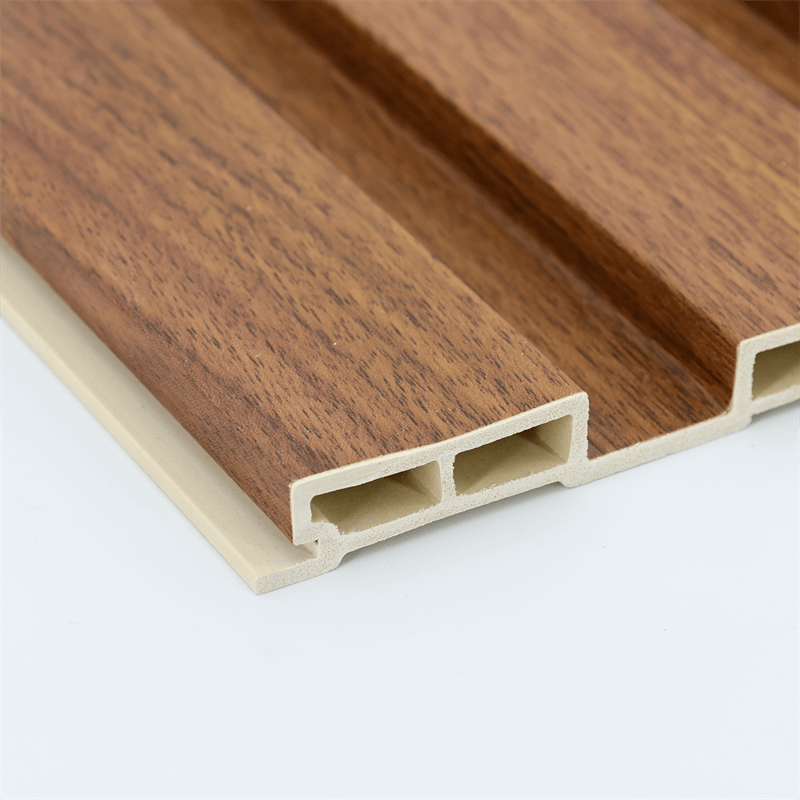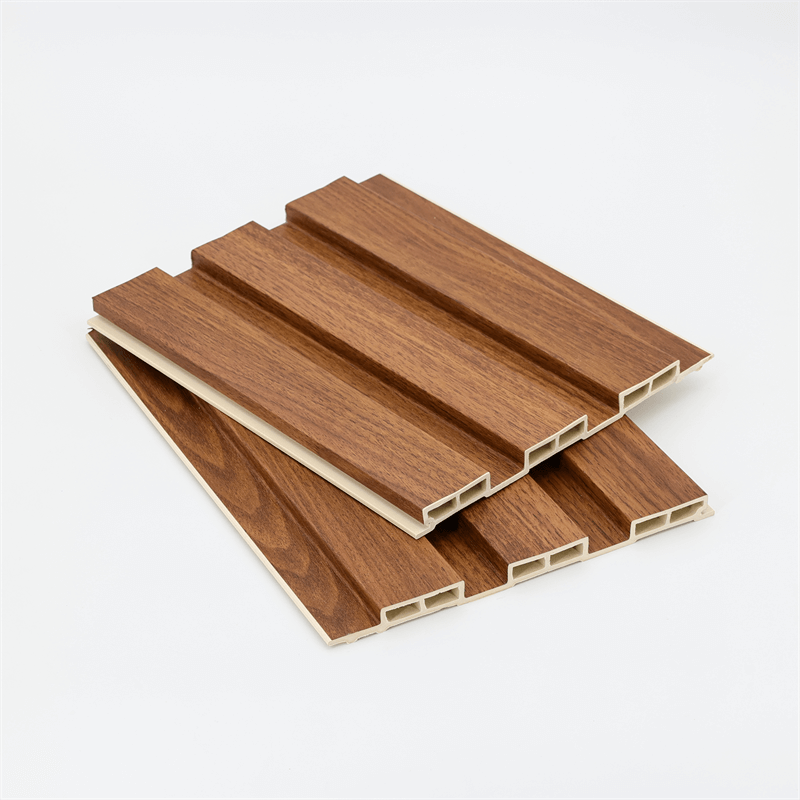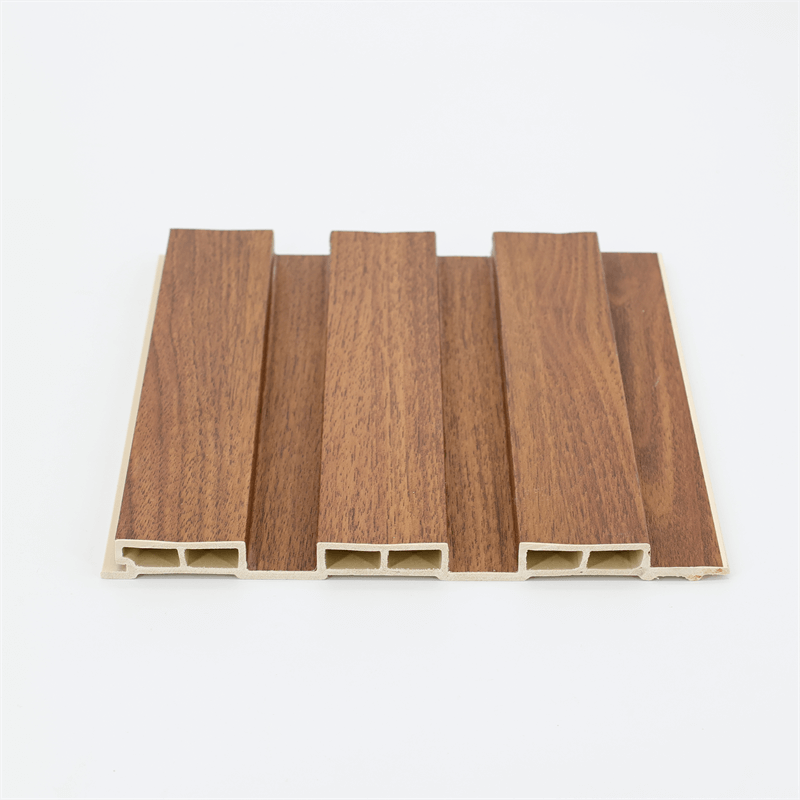In today’s fast-paced world, reconnecting with nature has become increasingly important for our well-being and overall quality of life.
Biophilic design, which aims to incorporate elements of nature into built environments, has gained significant attention in the field of architecture and interior design.
Wood-plastic composite (WPC) wall panels offer a unique opportunity to create biophilic spaces that bring the benefits of nature indoors.
This essay explores the concept of biophilic design, the advantages of using WPC wall panels, the integration of natural elements, and the impact on human well-being.
I. Biophilic Design: Bringing Nature Indoors
Biophilic design seeks to establish a connection between humans and the natural world by incorporating natural elements into the built environment.
This approach recognizes the innate human affinity for nature and aims to enhance well-being, productivity, and overall satisfaction.
By integrating natural materials, patterns, textures, and views, biophilic design creates spaces that promote a sense of calm, rejuvenation, and connection to the natural world.
WPC wall panels offer an ideal medium for implementing biophilic design principles.
While the panels themselves are not natural wood, they mimic the look and texture of wood, bringing a touch of nature into indoor spaces.
The incorporation of WPC panels allows designers and architects to create biophilic environments that are visually appealing, sustainable, and low maintenance.
II. Advantages of WPC Wall Panels in Biophilic Design
WPC wall panels offer several advantages when it comes to incorporating biophilic design principles. These advantages contribute to the overall success and effectiveness of biophilic spaces.
- Aesthetic Appeal: WPC panels resemble the appearance of natural wood, adding warmth, texture, and visual interest to interior spaces. The natural wood-like patterns and colors of WPC panels create a connection to nature, evoking a sense of tranquility and relaxation.
- Durability and Longevity: WPC panels are known for their durability and resistance to moisture, decay, and fading. This longevity ensures that the biophilic design elements incorporated with WPC panels will retain their beauty and functionality over time, reducing the need for frequent replacements and maintenance.
- Sustainability: WPC panels often include recycled materials, such as wood fibers or flour, contributing to a sustainable approach in design. By choosing WPC panels over traditional wood materials, designers can help conserve natural resources and reduce their environmental impact.
- Versatility: WPC panels can be customized to fit various design styles and applications, making them suitable for a wide range of biophilic design projects. Whether used in residential or commercial settings, WPC panels offer flexibility in design, allowing for the creation of unique and captivating biophilic spaces.
III. Integration of Natural Elements
Integrating natural elements into the design process is essential for creating biophilic spaces that foster a strong connection to nature.
In addition to using WPC wall panels, several other natural elements can be incorporated to enhance the biophilic experience.
- Greenery and Living Walls: Introducing plants and living walls into interior spaces adds a vibrant and refreshing touch of nature. The combination of WPC panels and greenery creates a harmonious balance between the natural and built environments, improving air quality and providing a sense of well-being.
- Natural Light and Views: Maximizing natural light and providing views to the outdoors are integral aspects of biophilic design. WPC wall panels can be strategically positioned to frame windows and create focal points, allowing occupants to enjoy the beauty of the natural world from within.
- Natural Materials and Textures: In addition to WPC panels, incorporating other natural materials such as stone, bamboo, or cork can further enhance the biophilic experience. The use of natural textures, such as rough-hewn wood or pebbles, can create a tactile connection to nature, adding depth and richness to the design.
- Water Features: Incorporating water features, such as indoor fountains or ponds, can evoke a sense of tranquility and serenity. The sound and movement of water bring a calming and soothing element to the biophilic space, enhancing the overall experience.
IV. Impact on Human Well-being
The integration of biophilic design elements, including WPC wall panels, has a profound impact on human well-being. Research has shown that exposure to nature has numerous benefits, both physical and psychological.
- Stress Reduction: Biophilic spaces have been proven to reduce stress levels and promote relaxation. The presence of natural elements, such as WPC panels resembling wood, has a calming effect on individuals, providing a respite from the demands of daily life.
- Increased Productivity and Creativity: Biophilic design has been linked to improved cognitive function and increased productivity. By incorporating natural elements into the environment, including WPC panels, individuals experience enhanced focus, creativity, and problem-solving abilities.
- Improved Mental and Physical Health: Exposure to nature has been associated with improved mental health and well-being. Biophilic spaces with WPC wall panels provide a connection to the outdoors, even in urban settings, offering the benefits of improved mood, reduced anxiety, and increased vitality.
- Enhanced Connection to the Environment: Biophilic design with WPC panels fosters a sense of connection and responsibility towards the natural world. By bringing nature indoors, individuals develop a deeper appreciation for the environment and a desire to protect and preserve it.
Designing with nature through biophilic design principles offers a multitude of benefits for both individuals and the built environment.
WPC wall panels play a crucial role in creating biophilic spaces, with their aesthetic appeal, durability, sustainability, and versatility.
The integration of natural elements, such as greenery, natural light, and water features, further enhances the biophilic experience.
The impact on human well-being, including stress reduction, increased productivity, improved health, and a stronger connection to the environment, highlights the importance of incorporating biophilic design in our living and working spaces.
By embracing WPC wall panels and biophilic principles, we can create harmonious environments that bring the beauty and benefits of nature indoors, promoting a sense of well-being and rejuvenation.
Furthermore, the use of WPC wall panels in biophilic design extends beyond their visual appeal and practical benefits.
These panels offer a sustainable solution that aligns with the principles of environmental responsibility and conservation.
WPC panels often incorporate recycled materials, such as wood fibers or flour, reducing the demand for virgin resources.
By utilizing recycled materials, the production of WPC panels helps minimize waste and reduces the environmental impact associated with traditional wood products.
This sustainable approach contributes to the preservation of forests and ecosystems, promoting a healthier and more balanced natural environment.
In addition, the longevity and durability of WPC wall panels support sustainable design practices.
These panels are resistant to moisture, decay, and fading, ensuring their long-term performance and reducing the need for frequent replacements.

By choosing WPC panels, designers and architects can create biophilic spaces that stand the test of time, reducing waste and conserving resources in the process.
Moreover, WPC panels are low maintenance, requiring minimal upkeep compared to natural wood or other materials.
They are easy to clean and maintain their appearance over time with simple cleaning routines.
This reduces the need for harsh cleaning agents or frequent refinishing, contributing to a healthier indoor environment and minimizing the use of chemicals that could harm human health and the environment.
The integration of WPC wall panels into biophilic spaces also supports indoor air quality.
Unlike natural wood, WPC panels do not release volatile organic compounds (VOCs) into the air, promoting better indoor air quality and creating a healthier living or working environment.
This is especially important for individuals with allergies or respiratory sensitivities, as WPC panels provide a safe and allergy-friendly alternative.
Additionally, WPC panels can contribute to energy efficiency in biophilic spaces.
The thermal insulation properties of these panels help to regulate indoor temperatures, reducing the need for excessive heating or cooling.
By minimizing energy consumption, WPC panels contribute to lower carbon emissions and promote sustainable energy practices.
In conclusion, WPC wall panels offer a valuable solution for incorporating biophilic design principles into built environments.
Their aesthetic appeal, durability, sustainability, and low maintenance requirements make them a perfect fit for creating visually stunning and environmentally conscious spaces.
By integrating WPC panels, designers can bring the beauty and benefits of nature indoors while contributing to a sustainable and healthier future.
The use of WPC wall panels in biophilic design promotes well-being, enhances the connection to the natural world, and supports sustainable design practices.
As we strive to design spaces that foster harmony between humans and nature, WPC panels provide a powerful tool for creating biophilic environments that inspire, rejuvenate, and promote a deeper appreciation for the wonders of the natural world.


